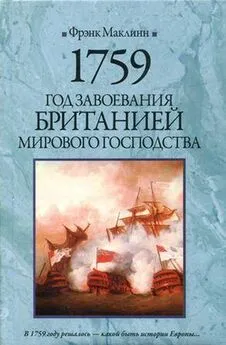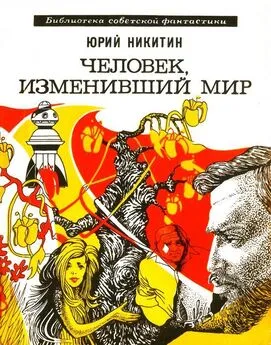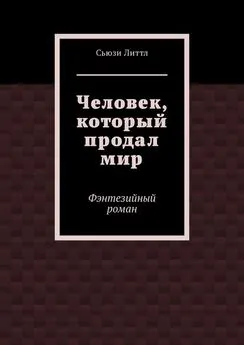Фрэнк Маклинн - Чингисхан. Человек, завоевавший мир
- Название:Чингисхан. Человек, завоевавший мир
- Автор:
- Жанр:
- Издательство:АСТ
- Год:2019
- Город:Москва
- ISBN:978-5-17-095186-4
- Рейтинг:
- Избранное:Добавить в избранное
-
Отзывы:
-
Ваша оценка:
Фрэнк Маклинн - Чингисхан. Человек, завоевавший мир краткое содержание
Чингисхан. Человек, завоевавший мир - читать онлайн бесплатно ознакомительный отрывок
Интервал:
Закладка:
2200
Rachewiltz, In the Service p. 24.
2201
Pelliot, 'A propos des Comans,' loc. cit. p. 169.
2202
Bretschneider, Mediaeval Researches I p. 322; Vasary, Cumans and Tatars p. 81.
2203
Pentti Aalto, 'Swells of the Mongol Storm around the Baltic,' Acta Orientalia Academiae Scientiarum Hungaricae 36 (1982) pp. 5–15.
2204
JR II pp. 1170–1171. Another expedition, under Batu's brother Shinqor in 1242–43, was said to have penetrated so far north that they met people with fair hair and there was just one hour of night (Wolff, Mongolen oder Tartaren pp. 148, 383).
2205
Так у автора. — Прим. пер .
2206
Bretschneider, Mediaeval Researches I p. 317; Fennell, Crisis pp. 81–82.
2207
Mitchell & Forbes, Chronicle of Novgorod pp. 84–85.
2208
Fennell, Crisis p. 104.
2209
Fennell, Crisis p. 104.
2210
«Дальше некуда» ( лат .), в данном случае «верх наглости».
2211
Bretschneider, Mediaeval Researches I pp. 307, 317–318; Grekov & Yakubovski, Horde d'Orpp. 204, 305; Fennell, Crisis p. 82; Vernadsky, Mongols and Russia p. 52.
2212
David B. Miller, 'The Kievan Principality on the Eve of the Mongol Invasion: An Inquiry into Current Historical Research and Interpretation,' Harvard Ukranian Studies 10 (1986) pp. 215–240; Pelenski, Contest for the Legacy; Soloviev, Shift Northward. The quote is from Fennell, Crisis p. 82.
2213
Franklin & Shepard, Emergence of Rus pp. 2, 13, 279, 282, 287.
2214
Bretschneider, Mediaeval Researches I p. 318.
2215
Fennell, Crisis p. 83.
2216
Церковь Успения Пресвятой Богородицы, первая каменная церковь. — Прим. пер .
2217
Vernadsky, Mongols and Russia p. 52.
2218
Русская православная церковь почитает день памяти святого Николая 19 декабря, Римско-католическая церковь — 6 декабря. — Прим. пер .
2219
Boyle, Successors p. 69.
2220
Dawson, Mongol Mission pp. 29–30.
2221
Wiener, Anthology of Russian Literature I pp. 105–106.
2222
Bretschneider, Mediaeval Researches I pp. 319–323; Spuler, Goldene Horde pp. 20–25; Vernadsky, Mongols and Russia pp. 52–58; d'Ohsson, Histoire II p. 122; Dimnik, Dynasty of Chernigov pp. 331–358.
2223
SHR pp. 206–207.
2224
Skelton, Marston & Painter, Vinland Map pp. 76–77.
2225
Christian, History I p. 412.
2226
SHR pp. 206–207; SHC pp. 215–216; Boyle, Successors p. 138.
2227
Rachewiltz, Commentary pp. 1012–1013.
2228
Государственные интересы ( фр .).
2229
Rachewiltz, Commentary pp. 1015–1016.
2230
Rachewiltz, Commentary pp. 1017–1019.
2231
P. Ratchnevsky, 'Die Rechtsverhaltnisse bei den Mongolen im 12.-13. Jahrhundert,' Central Asiatic Journal 31 (1987) pp. 64–110 (at pp. 89–90).
2232
Rachewiltz, Commentary pp. 1012–1013, 1015–1016; d'Ohsson, Histoire II p. 627.
2233
JB II p. 587; Boyle, Successors pp. 138, 204, 212; Jackson & Morgan, Rubruck pp. 144–145; Dawson, Mongol Mission p. 59.
2234
Stevenson, Chronicle of Melrose, p. 86; Jackson, Mongols and the West p. 65.
2235
Matthew Paris, Chronica Majora III pp. 488–489; Buell, Dictionary p. 161.
2236
Matthew Paris, Chronica Majora III pp. 488–489; IV pp. 76–78, 112–119.
2237
Jackson, Mongols and the West p. 61.
2238
For Prester John and the Mongols see Yule, Cathay I pp. 173–182; Yule & Cordier, Ser Marco Polo I pp. 226–245; David Morgan, 'Prester John and the Mongols,' in Beckingham & Hamilton, Prester John pp. 159–170. Marco Polo identified Prester John not with Genghis but with Toghril (Ong Khan) (ibid. pp. 165–166). Other accounts seem to have conflated Genghis and his deadly enemy Quqluq. There were many variants on the Prester John theme. One idea was that the turmoil in Russia was because 'Prester John's' armies had revolted against him (Aubrey de Trois-Fontaines, Chronica in Monumenta Germaniae Historica, Scriptores 23 p. 942). Another was that the Mongols were the legendary giants Gog and Magog and that the Muslims should fear them even more than the Christians did. See David Cook, 'Apocalyptic Incidents during the Mongol Invasion,' in Brandes & Schmieder, Endzeiten pp. 293–312; C. Burnett, 'An Apocryphal Letter from the Arabic Philosopher al-Kindi to Theodore, Frederick Il's Astrologer concerning Gog and Magog, the Enclosed Nations and the Scourge of the Mongols,' Viator 15 (1984) pp. 151–167.
2239
Rodenberg, Epistolae I pp. 178–179; Denis Sinor, 'Les relations entre les Mongols et l'Europe jusqu'a la mort d'Arghoun et de Bela TV,' Journal of World History 3 (1956) pp. 39–62 (at p. 40).
2240
C. W. Connell, 'Western Views on the Origin of the "Tartars": An Example of the Influence of Myth in the Second Half of the Thirteenth Century,' Journal of Medieval and Renaissance Studies 3 (1973) pp. 115–137 (at pp. 117–118); Axel Klopprogge, 'Das Mongolenbild im Abendland,' in Conermann & Kusber, Mongolen im Asien pp. 8–101; Kloprogge, Ursprung und Auspragung pp. 155–159; Aubrey de Trois-Fontaines, Chronica in Monumenta Germaniae Historica, Scriptores 23 p. 911.
2241
Monumenta Germaniae Historica, Scriptores 32 p. 208; Dorrie, Drei Texte zur Geschichte der Ungarn und Mongolen, pp. 125–202 (at pp. 165–182); Denis Sinor, 'Les relations entre les Mongols et l'Europe,' loc. cit pp. 39–62 (at p. 43); Antoine Mostaert & F. W Cleaves, 'Trois documents mongols des archives secretes vaticanes,' Harvard Journal of Asiatic Studies 15 (1952) pp. 419–506.
2242
Louis Hambis, 'Saint Louis et les Mongols,' Journal Asiatique 258 (1970) pp. 25-ЗЗ; Richard, Saint Louis pp. 160–180; Goff, Saint Louis pp. 552–555; Peter Jackson, 'The Crusades of 1239–1241 and their aftermath,' Bulletin of the School of Oriental and African Studies 50 (1987) pp. 32–60. Nevertheless Louis did later send out spies and envoys who made contact with the Mongols and brought back much important intelligence. See Matthew Paris, Chronica Majora v pp. 37–38; vi pp. 113–116; Richard, Simon de St Quentin pp. 94–117; G. C. Guzman, 'Simon of St Quentin and the Dominican Mission to the Mongol Baiju: A Reappraisal,' Speculum 46 (1971) pp. 232–249.
2243
For full details see Sumption, Albigensian Crusade.
2244
Abulafia, Frederick II pp. 346–347.
2245
Christiansen, Northern Crusades pp. 126–130; Fonnesberg-Schmidt, Popes and the Baltic Crusades.
2246
Richard Spence, 'Gregory IX and the Attempted Expeditions to the Latin Empire of Constantinople: The Crusade for the Union of the Latin and Greek Churches,' Journal of Medieval History 5 (1979) pp. 163–176; Christiansen, Northern Crusades pp. 133–134.
2247
Monumenta Germaniae Historica, Scriptores 10 p. 59; 17 p. 294; Peter Jackson, 'The Crusade against the Mongols, 1241,' Journal of Ecclesiastical History 42. (1991) pp. 1–18.
2248
Jackson, Mongols and the West p. 67.
2249
Theiner, Vetera Monumenta I pp. 184–185; Gockenjan & Sweeney, Mongolensturm p. 169; Jackson, Mongols and the West p. 66.
2250
For biographies of Frederick see Abulafia, Frederick II; Kantorowicz, Frederick the Second; Wolf, Stupor Mundi; Sturner, Friedrich II.
2251
Maalouf, Crusades through Arab Eyes p. 230.
2252
Aubrey de Trois-Fontaines, Chronica in Monumenta Germaniae Historica, Scriptores 23 p. 943.
2253
Detwiler, Germany p. 43.
2254
Bezzola, Mongolen in abendlandischer Sicht p. 76.
2255
Bjorn K. U. Weiler, Henry III pp. 86–94.
2256
Monumenta Germaniae Historica, Scriptores 1 pp. 765, 796, 821–823, 826; 2 pp. 2, 102, 105.
2257
Matthew Paris, Chronica Majora iv pp. 115–118; Gockenjan & Sweeney, Mongolensturm p. 253.
2258
В данном случае автор использует имя Qadan . Кадан — младший сын Угэдэя. Второй сын Угэдэя по старшинству — Годан (Кодан, Кутан, Кудэн, у автора ранее — Коден). Старший сын — Гуюк. — Прим. пер .
2259
Nothing is more controversial than the issue of numbers during the Mongol invasion of Europe. Modern historians seem to compensate for the medieval chroniclers' habit of multiplying numbers tenfold by a compensating 'downsizing'. The truth is probably somewhere between the two extremes, but at the lower end. Estimates for the Mongol army in Poland range from the absurdly high 100,000 (far greater than the entire army in Russia and Eastern Europe) to an absurdly low 8,000 operating in Poland. Some Polish historians, doubtless wishing to minimise a national humiliation, have only 2,000 (!) Poles at the battle of Liegnitz. Others have the timbers at Liegnitz approximately equal at 8,000 each. The most likely figure is somewhere around 20,000 (or slightly fewer) Mongols and 25,000 (or slightly fewer) Poles; see Eric Hildinger, 'The Battle of Liegnitz,' Military History, June 1997. For a convincing argument on Mongol numbers (and the 20,000 mark at Liegnitz) see John Masson Smith, 'Mongol Manpower and the Persian Population,' Journal of the Economic and Social History of the Orient 18 (1975) pp. 271–299 (at p. 272). Denis Sinor, 'The Mongols in the West,' loc. cit. accepts even higher numbers. The 'downsizers' are best represented by David Morgan (Mongols p. 88) and Carl Sverdrup, 'Numbers in Mongol Warfare', Journal of Medieval Military History 8 (2010) pp. 109–117.
2260
Lerski, Historical Dictionary of Poland pp. 309–310.
2261
Iwamura Shinobu, 'Mongol Invasion of Poland in the Thirteenth Century,' Memoirs of the Research Department of the Toyo Bunko 10 (1938) pp. 103–157.
2262
Интервал:
Закладка:



![Ксения Чепикова - Человек, научивший мир читать [История Великой информационной революции]](/books/1059757/kseniya-chepikova-chelovek-nauchivshij-mir-chitat-ist.webp)



